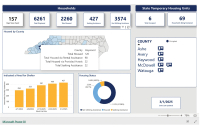Be prepared to wait before we have a president

So here we are, days away from this pivotal election, and here’s a word of advice: take a deep breath, relax, and let the system play out as it’s intended, because we won’t know who our next president is until days after Nov. 5.
While that may be maddening for the hardcore partisans out there, the truth is that the delay is not a bad thing, it’s no reason to panic, it’s no reason to think anything untoward is happening. In fact, one could make a sound argument that it means just the opposite: election officials from both parties are doing their due diligence, following each state’s rule for counting mail-in ballots, doing recounts if the closeness of a race automatically triggers one, perhaps waiting for canvasing before announcing winners, and just making sure we can have faith that the final results reflect the will of the American people.
In 2020, it was four days after the election when news agencies announced the winner of the presidency. Legislators in several states have enacted rules that pretty much ensure multi-day delays in announcing vote totals. Instead of making it easier to announce winners, these new guardrails are going to slow the process.
As we all know, in 2020 that lag between Election Day and the announcement of a winner led to all kinds of conspiracy theories and wild accusations of massive voter fraud, of ballot boxes disappearing, etc. Donald Trump and his enablers helped fuel this crisis, but this time perhaps we should all prepare for the reality that we won’t know who wins for several days.
This election comes down to who wins the seven “battleground” states: North Carolina, Georgia, Nevada, Arizona, Michigan, Wisconsin and Pennsylvania. Remember last election there was a huge increase in mail-in voting due to Covid. At least two of the battleground states — Wisconsin and Pennsylvania — don’t allow mail-in ballots to be processed until Election Day. In Nevada, votes postmarked by Election Day are still good if they arrive four days later (Nov. 9 in this case).
In elections past, Democrats did a whole lot more mail-in voting than Republicans. In 2020, that led to vote-total swings that mostly favored Democratic candidates and led to cries of foul from those claiming fraud. This election, it seems Republicans are turning out in record numbers for early voting, so it’s likely they are also participating more heavily in mail-in voting. Perhaps that will calm some of the belly aching about the election swings as these votes are counted.
Related Items
Then there are the problem ballots, what’s known as provisional ballots. A ballot falls into this category if the voter, for instance, shows up at the wrong polling place or if their signature doesn’t exactly match what’s on their registration card. Usually these are technical or bureaucratic issues, but each state has rules for how to determine the validity of these ballots, and in each election it’s impossible to determine how many ballots will fall into this category. In closely contested races, these provisional ballots can play an outsized role in the outcome.
Each state sets its own rules for all these matters, and so we’ll have to sit back and wait while the process unfolds according to the laws and methodology each state has adopted.
Look, here’s the truth that we all know: politically we are a divided country, closely divided. But this will also be the most closely monitored election in U.S. history. Let the system play out, and then we can all have confidence in the outcome.
(Scott McLeod can be reached at This email address is being protected from spambots. You need JavaScript enabled to view it..)













